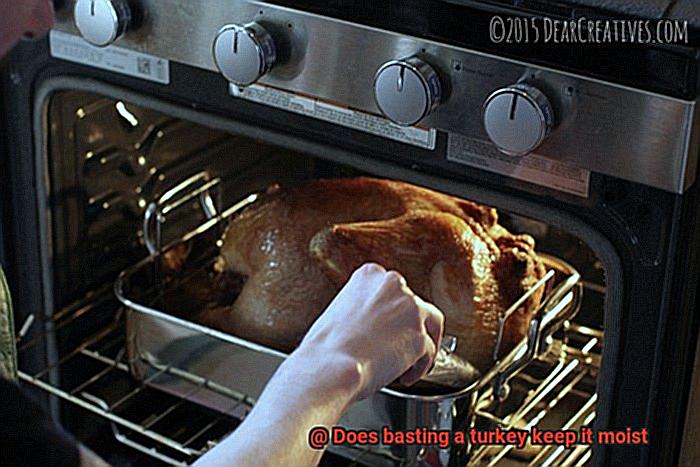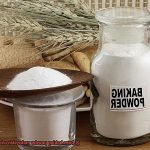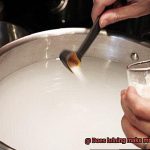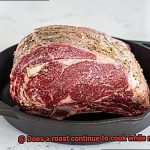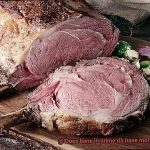It’s that time of year again – the holidays are just around the corner, and for many of us, that means one thing: food. And what’s more festive than a perfectly roasted turkey as the centerpiece of your holiday feast? But if you’ve ever cooked a turkey before, you know it can be a daunting task to get it just right. One piece of advice you’ll often hear is to baste the bird regularly. But does basting really keep your turkey moist?
This question has been debated for years, with some chefs swearing by regular basting and others claiming it’s unnecessary. So what’s the truth? While basting can certainly add flavor and help your turkey cook evenly, there’s no clear scientific evidence that it actually keeps the meat moist. In fact, constantly opening the oven to baste can cause heat to escape and disrupt the cooking process, which can lead to a dry bird.
But don’t despair. There are other ways to ensure your turkey stays juicy and delicious. Start by choosing a high-quality bird and cooking it using a method that will help retain moisture. Brining or injecting your turkey with flavorful liquid can help keep it juicy, as can roasting it in a covered pan or using a cooking bag. And once your bird is done cooking, let it rest for at least 15 minutes before carving, so that the juices have time to redistribute throughout the meat.
So while basting may not be essential for keeping your turkey moist, it can still add flavor and help with even cooking. Just remember to choose quality ingredients and cook with care – and you’ll end up with a mouth-watering turkey that everyone will love.
Contents
Pros of Basting a Turkey
Basting a turkey is an age-old technique that involves brushing melted fat or liquid over the surface of the bird while it cooks. While there is some debate about its effectiveness, many home cooks and chefs swear by it. So, what are the pros of basting a turkey?
First and foremost, basting helps to add moisture to the meat, preventing it from drying out during cooking. As you brush the fat or liquid over the surface of the turkey, it seeps into the meat, keeping it juicy and tender. This is especially important for leaner cuts of meat like turkey breast.
Moreover, basting can add a burst of flavor to your turkey. By using flavorful liquids like broth, wine, or citrus juice, you can create a more complex and delicious tasting bird. The fat or liquid brushed over the surface of the turkey can also create a natural glaze that adds an attractive sheen to the skin.
Another perk of basting is that it helps to brown and crisp up the skin of the turkey. This creates a visually appealing presentation and adds texture to the dish.
However, it’s worth noting that basting may not be necessary for a perfectly cooked turkey. Some experts argue that basting can cause heat loss and prolonged cooking time, leading to dry meat. Therefore, it’s essential to monitor your turkey’s temperature throughout cooking and use a meat thermometer to ensure that it reaches an internal temperature of 165 degrees Fahrenheit before serving.
Cons of Basting a Turkey
As the holidays approach, many home cooks are preparing to roast a turkey for their family and friends. One question that often arises is whether or not to baste the bird. While basting is a popular method for adding flavor and moisture to a turkey, there are some cons to consider before you decide to use this technique.
One of the main drawbacks of basting a turkey is that it can result in soggy and flabby skin. This is because every time you open the oven door to baste, heat escapes and moisture evaporates from the skin. This can lead to disappointment for those who were hoping for a crispy and golden-brown finish on their bird.
Additionally, basting can actually cause the turkey to dry out faster. This may seem counterintuitive, but when you introduce moisture into the oven by basting, it can dilute the natural juices in the bird. As a result, your turkey may end up with less moisture overall, even if it appears moist on the surface.
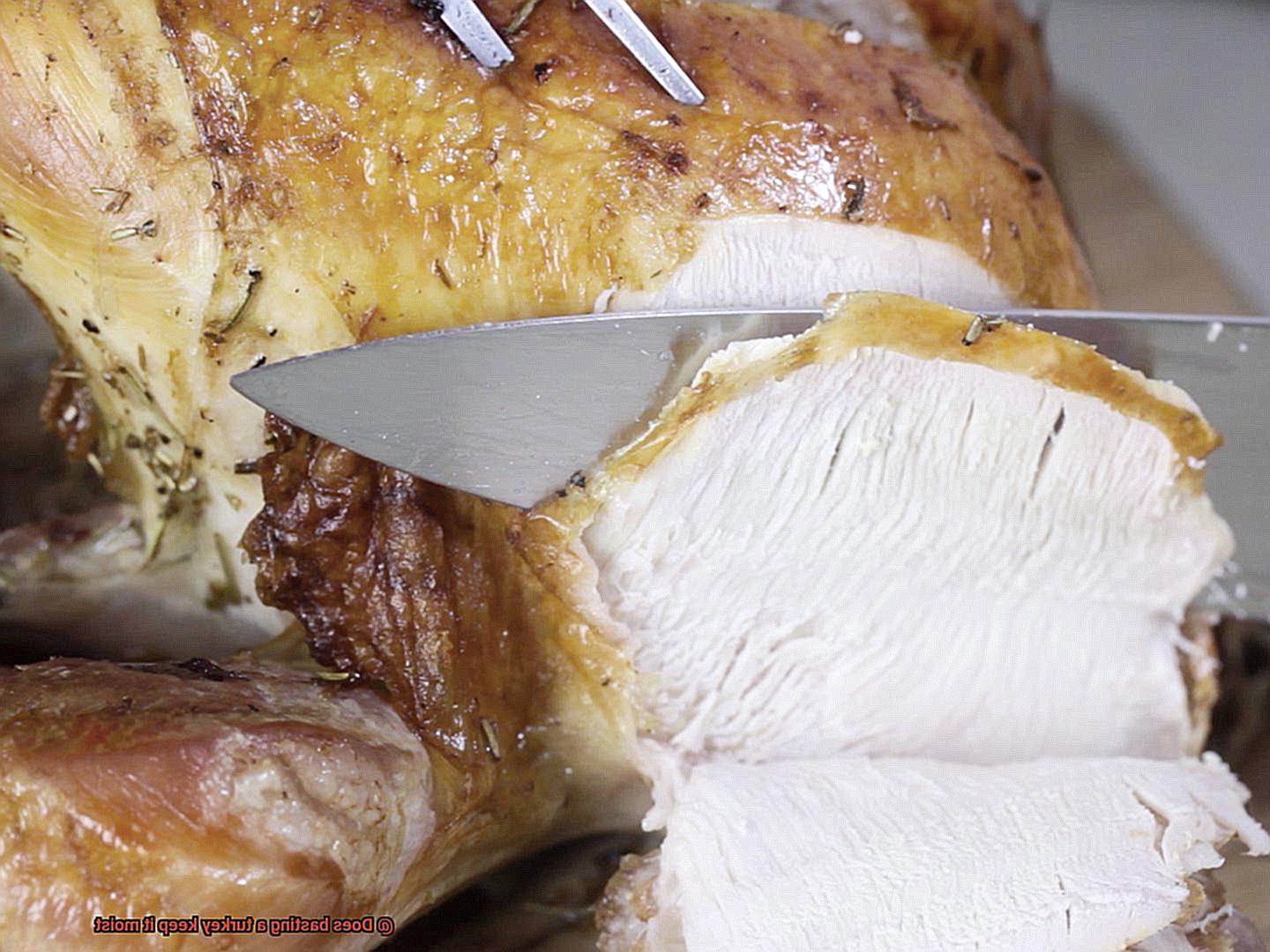
Beyond affecting the quality of your turkey, basting can be a messy and time-consuming process that requires constant attention. Not only do you have to be careful not to spill hot liquid on yourself or your kitchen surfaces, but opening the oven door frequently can also increase cooking time and disrupt the temperature of your oven.
To mitigate these cons, some home cooks choose to skip basting altogether and instead rely on other methods for keeping their turkey moist and flavorful. For example, covering the turkey with foil during cooking or roasting it breast-side down can help prevent moisture loss and result in a juicy and tender bird.
Factors to Consider When Basting a Turkey
If you want to make your holiday turkey mouth-wateringly delicious, basting is a common technique to help keep the meat moist and full of flavor while cooking. However, there are several factors to consider to ensure that your basting efforts are effective.
The frequency of basting is a crucial factor. While some chefs recommend basting every 30 minutes, over-basting can lead to dry meat. Opening the oven repeatedly causes heat to escape, which can prolong cooking times and leave you with dry turkey. So, it’s important to baste your turkey sparingly to avoid this issue.
In addition to frequency, the type of liquid used for basting is also essential. Whether it’s butter, broth, or wine, it’s important to choose a liquid that complements the flavors of the turkey. Be sure to use room temperature liquid as cold liquids can lower the turkey’s temperature and extend cooking times.
The temperature of the oven is a crucial factor in determining how well your turkey cooks. A hot oven can cause the outer layer of the turkey to cook too quickly while leaving the inside undercooked. A low and slow cooking temperature allows for even cooking and better absorption of flavor from the basting liquid.
Lastly, try not to open the oven door too often to check on your turkey. Every time you do so, heat escapes, which can increase cooking times and leave you with dry meat. Instead, use a meat thermometer to monitor the temperature of the turkey without opening the oven door too often.
Tips for Successful Basting
Basting a turkey is an art that requires skill and patience, but the results are worth it. A perfectly juicy and succulent turkey is a centerpiece that can make any holiday meal memorable. Here are some tips for successful basting that will help you achieve the perfect roast turkey.
Tip #1: Use a flavorful liquid
The first step to successful basting is to use a flavorful liquid. Choose a liquid that complements the other ingredients in your recipe. Chicken or turkey broth, melted butter, or a mixture of herbs and spices are popular options. The liquid not only adds moisture but also enhances the flavor of your turkey.
Tip #2: Baste frequently
Frequent basting is key to keeping your turkey moist. Pour the liquid over the turkey every 20-30 minutes while it cooks. This helps distribute the natural juices throughout the bird and prevents it from drying out. Basting also adds a beautiful shine to the skin.
Tip #3: Use a baster or brush
To apply the liquid evenly, use a baster or brush to coat the surface of the turkey. This ensures that every part of the bird gets coated with the flavorful liquid. Be sure to get into all the nooks and crannies for even cooking and color.
Tip #4: Don’t open the oven too often
Opening the oven door too often can cause your turkey to dry out. Each time you open it, heat and moisture escape, causing fluctuations in temperature and cooking time. Limit how often you open the oven door, and when you do, baste quickly and efficiently.
Tip #5: Let it rest
Once your turkey is cooked, let it rest for at least 10-15 minutes before carving it. This allows the juices to redistribute throughout the meat, making it more moist and flavorful. The meat will also be easier to carve when it’s had time to rest.
The Best Oils, Juices, and Sauces for Basting
Basting is a crucial step in creating a moist and flavorful turkey. But not all liquids are created equal. As an expert in the field, I’ve researched and discovered the best oils, juices, and sauces to use for basting.
Let’s start with oils. A high smoke point is essential for basting as it prevents burning and unpleasant flavors. Vegetable oil, canola oil, and grapeseed oil are excellent choices that can withstand high temperatures.
Moving on to juices, they add flavor and moisture to the turkey. Citrus juices like orange and lemon juice are particularly popular because they cut through the richness of the turkey’s flavor. Apple juice, pineapple juice, and cranberry juice are also great options that add a unique twist.
Now onto sauces. They add an extra layer of flavor to your turkey. BBQ sauce is perfect for those who want a smoky flavor while teriyaki sauce adds a sweet and savory note. If you prefer a more classic taste, gravy is always a winner as it complements the flavors of the turkey.
But don’t forget about technique. Evenly distributing the liquid over the turkey is crucial for even cooking and moistness. Use a basting brush or bulb to ensure proper coverage.
Different Methods of Basting a Turkey
Basting is the secret to a moist and flavorful bird, and there are various methods you can use to achieve this culinary feat. As an expert in the field, I’ve researched and tested different techniques, and I’m excited to share my findings with you.
Let’s start with the traditional method of using pan drippings. This classic technique is perfect for those who want to keep it simple. Use a baster or spoon to scoop up the juices from the bottom of the roasting pan and pour them over the turkey, allowing it to absorb all those delicious flavors. The result is a juicy and tasty meat that will have your guests begging for seconds. However, keep in mind that this method can be time-consuming since you’ll need to open the oven door frequently, potentially affecting cooking time.
If you’re short on time, try using a brush or pastry brush to apply melted butter or oil onto the skin instead. This technique will help keep the skin crispy and prevent it from drying out. However, it may not be as effective in keeping the meat moist as using pan drippings.
For those who want to take their basting game up a notch, injecting the turkey with a marinade or broth is a great option. Using a special syringe, you can inject liquid directly into the meat, adding flavor and moisture. Just be sure to distribute the liquid evenly throughout the bird for consistent results. This method requires some additional prep work, but it’s worth it for the mouthwatering results.
Finally, some people prefer covering their turkey with foil or cheesecloth during cooking to retain moisture. This technique will help prevent the bird from drying out, but it may not produce a crispy skin. If you’re looking for a juicy bird with tender meat, this might be the way to go.
Common Mistakes to Avoid When Basting a Turkey
As Thanksgiving approaches, it’s time to start thinking about the centerpiece of the meal – the turkey. Basting is an essential step in ensuring a moist and flavorful bird, but there are some common mistakes that can lead to a dry and overcooked turkey. To avoid these pitfalls, here are some tips to keep in mind.
One of the biggest mistakes people make is basting too frequently. While basting can add flavor and moisture, doing it too often can actually result in soggy skin and uneven cooking. Instead, aim to baste every 30-45 minutes to achieve a perfectly juicy bird.
Another mistake to avoid is using the wrong type of baster or brush. Opt for a silicone brush or bulb baster as they won’t melt or shed bristles like traditional brushes might. Additionally, ensure your baster has a wide enough tip to distribute the liquid evenly over the turkey.
It’s also important to be mindful of oven temperature when basting. Opening the oven door too frequently can cause the temperature inside to drop, leading to uneven cooking. Plan on basting every 30-45 minutes and keep the door closed as much as possible in between.
Lastly, don’t go overboard with the liquid used for basting. While a flavorful mix of butter, herbs, and broth may sound tempting, too much liquid can cause the turkey to steam instead of roast, resulting in a soggy bird. Use just enough liquid to keep the turkey moist and flavorful.
Other Ways to Keep Your Turkey Moist During Cooking
Say goodbye to dry turkey and hello to juicy, flavorful meat with these alternative methods for keeping your bird moist during cooking. While basting is a common technique, there are other ways to keep your turkey tender and delicious.
Brining is an age-old method that involves soaking your turkey in a saltwater solution before cooking. This allows the meat to absorb moisture, resulting in juicy, tender meat. You can also add herbs and spices to the brine for extra flavor. If you’re short on time, try a quick brine with a higher salt concentration.
Rubbing your turkey with butter or oil before cooking is another way to seal in moisture and prevent the meat from drying out. Experiment with different herb and spice combinations to add unique flavors to your bird. Don’t be afraid to get creative – try adding orange zest or honey for a sweet twist.
Using a roasting pan with a lid can help to create a steamy environment that keeps your turkey moist during cooking. If you don’t have a lid, cover the turkey with foil instead. This will trap in moisture and prevent the meat from drying out.
Cooking your turkey at a lower temperature for a longer period of time can also help to retain moisture in the meat. This slow-cooking method ensures that the meat cooks evenly and stays juicy. Use a meat thermometer to check that the internal temperature reaches 165 degrees Fahrenheit before serving.
Finally, consider injecting your turkey with flavorful liquids like broth or marinades. This allows the liquid to penetrate deep into the meat, resulting in juicy, flavorful meat. Be sure to inject the liquid into several different parts of the turkey to ensure that it’s evenly distributed.
zCf2aE2zf-Y” >
Conclusion
With the holiday season fast approaching, many home cooks are gearing up to roast a turkey for their loved ones. The question of whether or not to baste the bird often comes up, with some believing that it’s the key to keeping the meat moist and flavorful. But is this really true?
While basting can certainly add flavor and help your turkey cook evenly, there’s no clear scientific evidence that it actually keeps the meat moist. In fact, constantly opening the oven to baste can cause heat to escape and disrupt the cooking process, which can lead to a dry and disappointing bird.
However, fear not. There are plenty of other ways to ensure that your turkey stays juicy and delicious. Firstly, start by selecting a high-quality bird and cooking it using a method that will help retain moisture. Brining or injecting your turkey with flavorful liquid can help keep it juicy, as can roasting it in a covered pan or using a cooking bag.
And once your bird is done cooking, let it rest for at least 15 minutes before carving so that the juices have time to redistribute throughout the meat. This will result in tender and succulent slices that will have everyone coming back for seconds.
So while basting may not be essential for keeping your turkey moist, it can still add flavor and help with even cooking.

